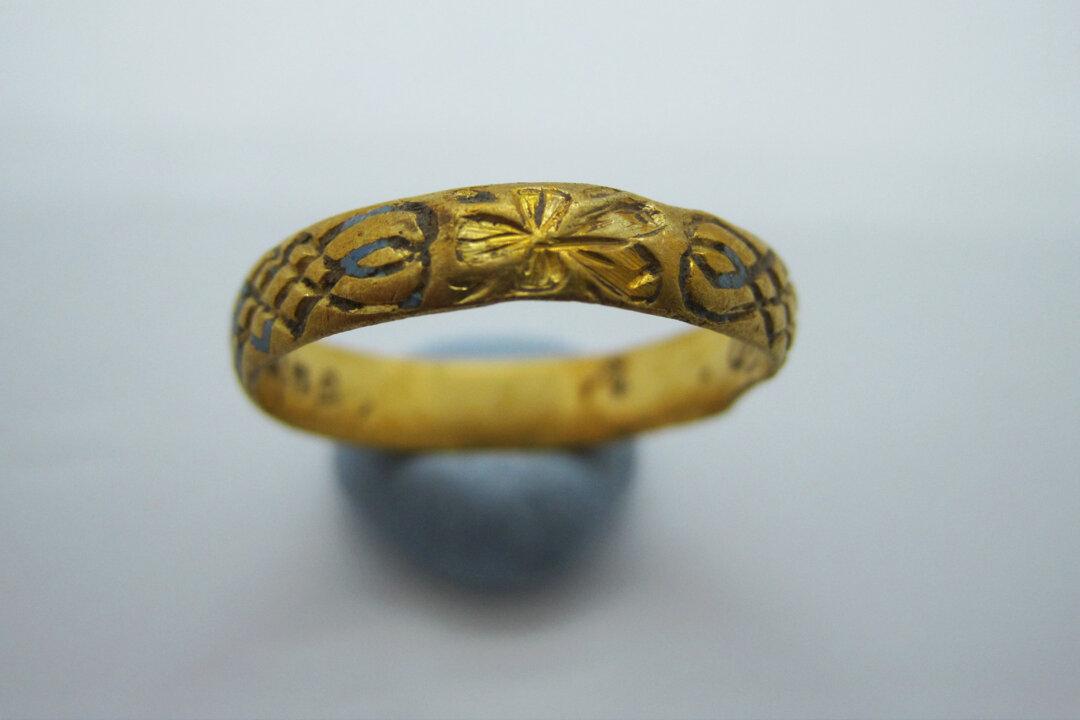A metal detectorist said he cried tears of joy after uncovering a 17th-century gold posy ring—which he claims could have been thrown away after a “lovers’ tiff.”
Robin Potter, 50, from Helensburgh, Argyll and Bute, Scotland, found the 400-year-old ring in a farmer’s field and is now waiting to hear if the rare piece of jewelry will be claimed by the National Museum of Scotland.





